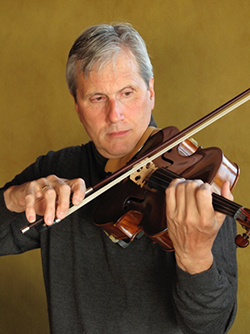New World players go from darkness to light in chamber program
It would be hard to design a more varied chamber program than the one offered Sunday by members of the New World Symphony.
There was a contemporary musical depiction of Alzheimer’s disease, which was about as dark as it sounds; a pillar of the repertoire by Brahms; and an arrangement for eight players of Johann Strauss Jr.’s Die Fledermaus Overture, which is unlikely to give the original much competition.
Both the Fledermaus arrangement and the contemporary work came from the pen of Brett Dean, a self-taught Australian composer who was once a member of the viola section of the Berlin Philharmonic. His clever octet arrangement of the Strauss overture made the most of limited forces, requiring the violist, cellist and horn player to pitch in on snare drum, glockenspiel and triangle.
Clarinetist Jesse McCandless’ velvety tone and the agile, incisive playing of violinists Jessica Ryou and Alex Gonzalez were standouts. But without the sweep and the luxuriant sound of a full string section, this sounded like a brittle, budget version of the real thing. Even with a well-executed performance like this one, it’s not obvious that the world really needed a chamber version of this piece.
Far more serious was Dean’s sextet Old Kings in Exile, composed in 2010 while his father was struggling with Alzheimer’s. In a video introduction projected above the stage, the composer said the experience of the disease inspired the work’s “cloudy and indistinct” atmosphere. “I do hope you enjoy–I don’t know whether enjoy is the right word–I hope you appreciate my sextet,” he said.
Scored for flute, clarinet, percussion, piano, violin and cello, the tone of the 20-minute, three-movement work ranged from foreboding to ominous, from grim to grave. There were indistinct murmurings and mutterings in violin, cello and piano. Flute and clarinet played melodies that attempted to achieve some focus and clarity but were overwhelmed by the swirls and eddies of the other instruments. The second movement opened with rapid, running figures in flute and clarinet. As their sounds grew in volume, they seemed to be trying to achieve through sheer volume a clarity that the mind could no longer achieve on its own.
There were moments of calm, such as the soft-edged, repeated two-chord motif that opened the third movement. But the overall effect was one of fog and chaos, decay and decline. While this gave a convincing and absorbing musical depiction of a clouded mind, the composer was right that “enjoy” wasn’t quite the word for the experience. Not many sextets require a conductor, but Michael Linville, New World’s dean of chamber music, capably led the performance.
For the final work on the program, the New World musicians were joined by an eminent guest, Lawrence Dutton, violist of the Emerson String Quartet. The performance of the Brahms String Sextet No. 2 was enhanced throughout by his crisp, sturdy, authoritative playing.
In the opening Allegro, the six musicians created a rich, unforced, very Brahmsian sound, keeping everything in balance so the sheer tonal opulence never overwhelmed the composer’s complex harmonic figures. There was an undercurrent of tension through much of the movement, discharged in climaxes played with full-hearted power. At two points deep in the movement, the music descends to a ghostly pianissimo, with tension-filled harmonies that came off clearly but full of understated force.
The musicians opened the Scherzo with a glassy tone, maximizing the contrast when they launched into a trio with rustic, foot-stomping vigor. The Adagio grew gently to a climax full of pathos and warmth, topped by violinist Rachel Sandman’s honey-toned playing.
The final movement powered along with a sense of forward motion, with ardent playing of the romantic second theme as it moved from instrument to instrument and clean, energetic playing of the rapid downward figures that mark the movement.
Posted in Performances
Leave a Comment
Mon Nov 20, 2017
at 12:45 pm
No Comments





